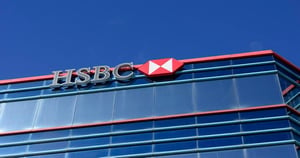Eli Lilly and Company (NYSE: LLY) stands as a formidable player in the healthcare sector, specifically in the general drug manufacturing industry. With a market capitalization of $662.23 billion, Eli Lilly is not just a significant entity within the United States but also a prominent global force in the pharmaceutical landscape. This article delves into why individual investors might want to keep a close watch on Eli Lilly’s stock, particularly considering its potential upside and robust financial performance metrics.
At its current trading price of $737.67, Eli Lilly’s stock has had a modest price change of 0.02% recently. The 52-week range indicates a fluctuation between $713.71 and $960.02, suggesting a degree of volatility that could intrigue both conservative and risk-tolerant investors. Analysts have set a target price range from $650.00 to an impressive $1,190.00, with an average target of $955.31, translating into a potential upside of approximately 29.5%. This figure alone could draw significant interest from investors seeking growth opportunities.
One of the standout figures for Eli Lilly is its remarkable revenue growth of 45.20%, serving as a testament to its dynamic performance in the pharmaceutical sector. This growth is supported by an impressive return on equity (ROE) of 77.28%, indicating efficient use of shareholders’ equity to generate profits. However, investors should note the negative free cash flow of approximately $1.82 billion, which could raise some concerns regarding the company’s short-term liquidity position.
Eli Lilly’s forward P/E ratio stands at 24.88, which offers a glimpse into its valuation based on expected earnings. This metric suggests that the company’s stock may still be reasonably priced given its growth prospects, particularly when juxtaposed with the broader healthcare sector’s performance.
Dividend-seeking investors might be drawn to Eli Lilly’s dividend yield of 0.81%, supported by a payout ratio of 43.94%. While not high by traditional standards, the yield represents a stable income stream, which could be appealing amid the current low-interest-rate environment.
From a technical perspective, Eli Lilly’s stock shows some interesting signals. With a 50-day moving average of $784.30 and a 200-day moving average of $834.68, the stock is currently trading below these benchmarks, which might indicate a bearish trend. The Relative Strength Index (RSI) of 84.44 suggests that the stock is overbought, a signal that typically warrants caution among investors. Moreover, the MACD and Signal Line values are both negative, reinforcing the need for a cautious approach.
Eli Lilly’s extensive product portfolio, including popular drugs for diabetes, oncology, migraine prevention, and autoimmune diseases, underscores its strong market presence. The company’s strategic collaborations with industry giants like Boehringer Ingelheim and Roche further bolster its innovative capabilities and market reach.
With 23 buy ratings, 5 hold ratings, and only 1 sell rating from analysts, the sentiment around Eli Lilly remains largely positive. Investors should weigh these positive attributes against the technical indicators and liquidity concerns to make an informed decision.
Eli Lilly’s substantial market cap, robust revenue growth, and potential upside make it a compelling candidate for investors looking for exposure to the healthcare sector. However, those interested should carefully consider the company’s financial health and technical signals before diving in.


































